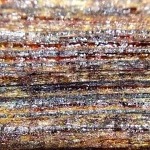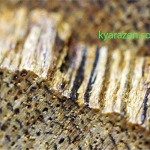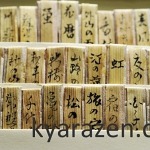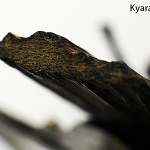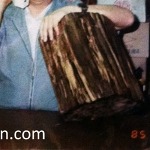There are two obvious lines of soil agarwood on the market, one from vietnam, and the other from Indonesia. The Vietnamese line consists of 3 types of soil agarwoods, yellow, red and black soil. In Indonesia, some call it yellow soil, but it is just Irian/Merauke’s Filaria material, and occasionally some papuan. But that said,… [Read More…]
Agarwood in Microscopy
oops! long overdue articles as usual. beeen reallly really busy studying and researching on tea pots and making incense sticks but i’ve not forgotten about writing. Sometimes, when people handle agarwood, they are seen pouring over the piece of wood with a handheld magnifier. What are they actually looking for?… Here are some tips…. [Read More…]
Heartwood
Managed to chance upon something uncommon recently, heartwood from a single old tree (estimated >100 years) of northern malaysia origin. The heartwood was undergoing some serious compaction as the tree was growing, the fibres are crumbly, the wood is crackly This is kodo-grade material! sinking wood is mostly “black resin”, this material, is golden fibres (contains… [Read More…]
Does Kyara sink in water?
Does Kyara sink in water, or does it need to sink in water to be considered a top grade? The blind pursuit for “sinking” grade agarwoods had opened up a whole new dimension to material substitution. Previous post on zelkova like materials, calocedrus formosana (Xiao-Nan), or even woods like rosewood (truth bringing incense), gaharu buaya; these… [Read More…]
TV program on Agarwood
Here’s a nice TV program in hongkong on agarwood 😉 Paul Kan, owner of the Imperial Museum, and the collections exhibited in the Xiang He exhibition a couple of years ago, is aiming to educate the public in Hongkong on agarwood, kynam, and the importance of conservation. In the third episode, he did mention about… [Read More…]
How long can fragrant woods be kept?
You probably would have seen the fragrant wood storage article from some time back, where I routinely prefer to store fragrant woods in glass containers with teflon lined caps that seal, the fragrant wood really well. The aim of this method is to prevent volatiles from escaping, and also to prevent contaminants from entering. Fragrant… [Read More…]
Know your Fragrant Wood Cuts
If you are a meat lover, particularly that of beef, you should know the cuts of your meats really well. Similarly if you are a fragrant wood lover involved in either Japanese/Chinese or other forms of incense practices/ceremonies, it is just as important to know the cut types, and how they are obtained. The… [Read More…]
Is Oud oil really more complex than the raw wood?
A very simple reason why oud oil can be sometimes perceived to be more complex than heating wood, nobody can control what goes into the pot or what are the scents of them. It is different from distilling sandalwood, or other coniferous woods where just a single chunk from the tree is sufficient to generate… [Read More…]
Scientific Literature on Kyara
well.. thought it could be time to get a little scientific 🙂 when I was doing my phd… reading science papers was a norm, they contain reasonably credible, peer reviewed, and quality information on various subject matters in depth. When it comes to incense or fragrant woods, it would be strange if people choose to… [Read More…]
Agarwood in the 1980s
I thought I would share a couple of pictures which I had requested from Mr Lee (owner of the Kyarazen 1985 oud), to allow people to have a “preview” of what agarwood was like in the 80s. It was not uncommon to have gigantic well resinated woods pass through the hands of Mr Lee as… [Read More…]
